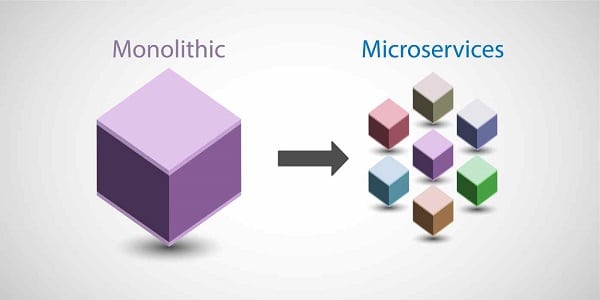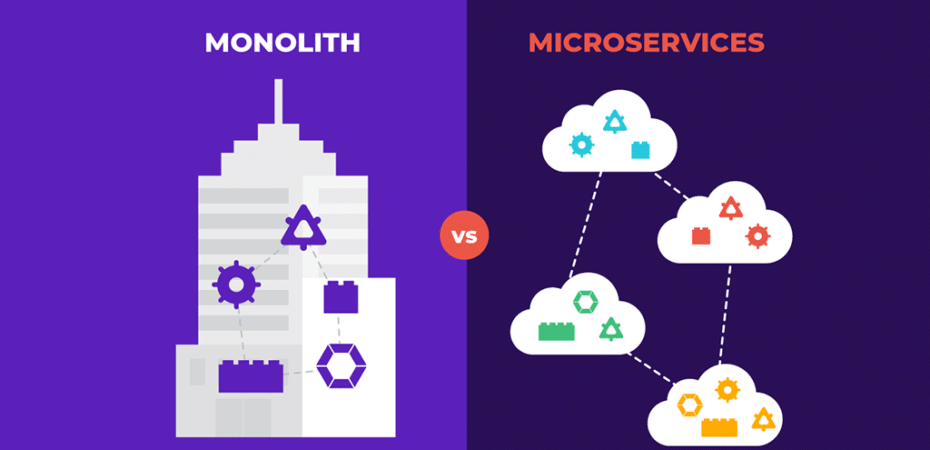For the longest time, developers have used the monolithic approach to create software. While it is the default approach for most software, it is slowly being replaced by microservices. This is mostly because of the challenges that developers face. Having a huge database to work with when coding can be tedious. Despite the challenges that come with a monolith, it is still used to code for software.
So should you stick to it or move to the trending microservices? In the last decade, there have been companies choosing to change to something modern. Let’s check which is better for your business monolithic vs microservices according to Digiteum!
Monolithic

In a monolithic approach, software is created as a single unit. It consists of three parts, the user aspect, the server, and the database. These are linked to each other and are run on a single server. Whenever there are changes, a developer does this on the entire architecture of the software.
Pros
As an option that has been around for longer, monolithic architecture has several benefits. These are some reasons why developers may opt for this option.
1. Seamless crosscutting
Crosscutting involves the process of running an application. It includes all the activities done such as logging into an app and navigation. Because the app is built as a single unit, you can easily go from one activity to another without difficulties.
2. Easy testing
Before you can deploy an app, it needs to be tested. Testing software can be expensive. It can take up to 15-20% of the overall expenses. One of the advantages of monolithic apps is that you can easily test them. The process is faster since you can test the entire software at once. The same applies to removing any bugs.
3. Easy to deploy
Creating a single unit makes deployment easier. There is no need to handle different parts of the software and deploy it in segments. A single file means putting an application out there faster and more efficiently.
4. Simple to develop
Using monolithic to Develop software is the current standard. Because of this, many developers are familiar with this system. Also, it is not complex as it is built as a single unit.
Cons
There are some disadvantages of using monolithic. Keep these in mind while making a decision.
1. Highly complex
Scaling a monolithic software is difficult. The process is very complex. The main challenge is how to separate the single unit. The database is very large which makes coding a challenge. Adding more users will make it difficult to scale.
2. Difficult to change
Because it functions as one, the app built using a monolithic is difficult to change. You would have to separate the individual parts to accomplish this. Once you change one code it affects the entire app. Scaling will also be a challenge that you will face.
As more technology emerges, this approach of creating apps will not benefit because of its rigid structure. Any changes will mean having to rewrite the entire code.
Microservices

The new technology available makes microservices a more desirable approach. This is as a result of the growing demand for software according to research. This is the complete opposite of the monolithic system. Applications are broken into several individual components. Each of these is independent. The separate units each have a function that is carried out independently. Each unit has its database and code.
The different components communicate via APIs. So you can deploy, change, and update each unit separately in the microservice architecture.
Pros
What are some reasons to use this architecture to create software? Here are some reasons to use microservices.
1. Separate units
When you compare monolithic vs. microservices, the latter is easier to code. This is because of the architecture. The separate units are the biggest advantage of microservices. It makes applications more flexible.
Deployment and updating can be done for each unit at different times. If there is a bug, it will only affect one part. So some services will continue running smoothly. Integration or adding updates is faster with microservices.
2. Efficient management
When you break an app into different parts and each function independently, monitoring is easier. You can focus on one part at a time. It becomes easier to understand what may be happening. By focusing on one service at a time, you will accomplish your goal.
3. Easy to scale
When it comes to scalability, microservices have the advantage over monolithic. The best part is that scaling can be independent for each unit. Scaling individual components helps you save time and costs. There is no need to scale the entire app as you would with a monolithic one. So spend only on the part that needs scaling.
4. Flexible
Developers can use the latest technology to update microservice apps. They can do this from the beginning of the development process. You can apply any new technologies at any point.
Cons
Using this approach comes with several challenges. The most common challenge is how complicated it can be.
1. Complexity
While the monolithic system is complex, it gets worse for microservice apps. Functionality depends on the link and communication between different components. Each unit can be deployed separately from different databases. Extra care should be taken to make sure each database is kept secure.
2. Testing challenges
With a microservice architecture, you have individual components with their database. So testing will take longer. You have to test each unit separately which is time-consuming.
3. Crosscutting difficulties
Microservice comes with many cried-cutting challenges. Some of these include:
- Logs
- Configuration
- Metrics
- Regular updates
These challenges should be considered before using this approach to create software. As well address the challenges associated with implementing new technologies.
Final thoughts
So what should you choose between monolithic vs microservices? It all depends on what you want. Each of these has advantages and disadvantages. Monolithic has been around longer and many developers are conversant with it. It is less complex and provides fewer cross cutting issues. Testing and deployment are done faster. However, it is difficult to add new technologies. Also, making updates may be more expensive as there is no need to change the entire app.
Microservices on the other hand use units that function separately. It is easy to incorporate new technology. Scaling and management are more efficient. Adding more users is easier. However, there may be challenges with crosscutting and testing the app.
Read also:
- Windows Defender vs Avast
- God of War Game in Order
- 3 Effective Tips for Successful Team Building
- Tips and Tricks for Developing High-Quality Node.js Applications
- Benefits of Backconnect Proxies You Didn’t Know
- Laravel + Angular.js – High-Performance Web Apps With Seamless Integration
- Artificial Intelligence and Evolving Technology

